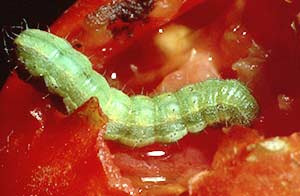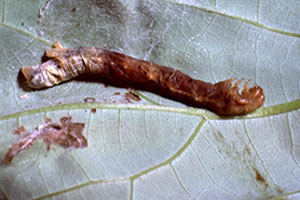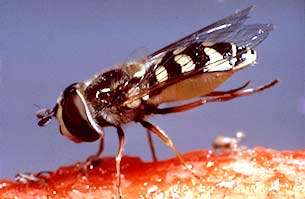Bacillus thuringiensis
 |
This bacteria is our allyOne of the benefits of the modern era is the development of Bacillus thuringiensis for the control of caterpillars. This bacteria is harmless to people, pets, even other insects, but to caterpillars it is deadly. When the caterpillar feeds on the leaves sprayed with Bt, the bacteria enters the stomach of the pest, which causes the bacteria to release a protein. This protein paralyzes the stomach muscles and disrupts the stomach lining, causing it to leak into the body cavity and taking the bacteria with it. Once the Bt has released the protein, the caterpillar stops feeding for the rest of its life, ending the damage. Once in the body cavity, the bacteria multiply, eventually killing the caterpillar. The bacteria continue to multiply, feeding on all the cells of the caterpillar until they completely convert the caterpillar into a sack of Bt bacteria. When the sack breaks open, the Bt disperse to infect other caterpillars. this disease cycle destroys the pest in just a week or so. |
 |
What about the lacewing I've released?The lacewing larvae are not harmed by Bt and, indeed, they will probably find any caterpillar eggs or caterpillars in your garden. However if you have one type of plant, like tomato, that is plagued by caterpillars evey year, it's probably best to use the Bt when you start seeing the characteristic damage symptoms. Sunlight inactivates Bt in 3 to 4 days. Usually one application will stop an entire caterpillar infestation, but if this infestation has been going on for a while and all stages of the pest are present (eggs, moths, and caterpillars of different sizes) then 2 or 3 applications 5 to 7 days apart may be needed. Keep an eye on this plant in case a final spray of Bt needs to be made to catch the last group of small worms. When a caterpillar is infected it stops feeding right away and soon becomes sluggish. Over the next few days it starts to become discolored and eventually it turns brown in color. In the last stage of the disease, the caterpillar typically hangs upside down from its rear feet on the underside of a leaf; you will often find them this way 5 to 10 days after the Bt applicaion. |

